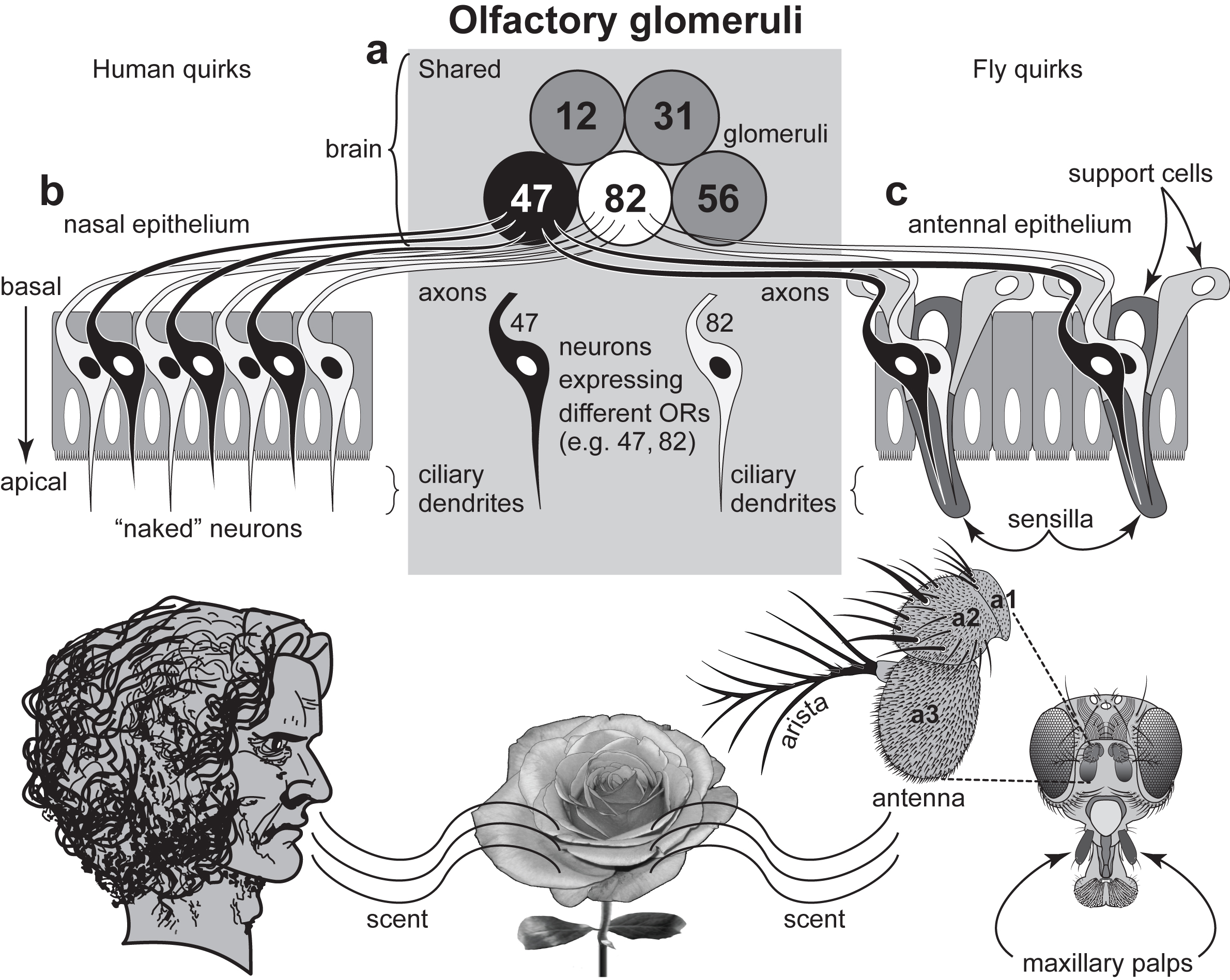

Deep Homology?
  |
Deep Homology? |
 Similarities in the processing of olfactory input by mammals and flies. a. Olfactory neurons in both mammals and flies express a single olfactory receptor (OR) and send their axons to a single cognate glomerulus. Glomeruli are spherical conglomerates (depicted as circles) of first-order synapses. Aside from their OR, fly neurons also express the generic cofactor “Orco” (a member of the same OR family), which heterodimerizes with all OR types. Two actual OR identities from flies are used here as examples: neurons expressing OR 47 (black cells with white nuclei) innervate glomerulus 47 in the antennal lobe of the brain, whereas neurons expressing OR 82 (white cells with black nuclei) project to glomerulus 82. The other depicted glomeruli (12, 31, 56) are imaginary. Each glomerulus actually receives input from ~50 neurons in flies and ~5000 neurons in mice, and the total number of glomeruli reaches ~50 in flies and ~1000 in mice. Mice use a different gene family to encode their OR proteins, and the glomerular taxonomy differs for their olfactory bulb—the equivalent of the insect’s antennal lobe. OR proteins decorate the ciliary dendrites at the tips of the sensory neurons. b. We detect odors by inhaling air through our nasal passage. The roof of that chamber (drawn above the head) is peppered with isolated (“naked”) neurons (black or white cells) that collectively express ~400 OR proteins (vs. ~1000 in mice). The protruding dendrites on the apical surface of the nasal epithelium are bathed by mucus. The dendrite of each neuron actually branches to form a bush of ~15 ciliary tips (not shown), which boosts its sensitivity. c. Flies detect odors primarily via the distal (a3) segment of their antennae, though they also use their maxillary palps. Unlike mammals, flies cluster their olfactory neurons into discrete sensilla. Two such (basiconic) sensilla from the antenna are drawn, each of which contains two different (black or white) neurons. The dendrites of those neurons are immersed in lymph that is secreted by the supporting cells. Access of airborne chemicals to the lymph is mediated by pores (not shown) in the surface cuticle, and transport of those chemicals to dendrites is facilitated by soluble odorant-binding proteins. Thus, flies, like humans, dissolve odor molecules before analyzing them -- a strategy that makes sense given the aquatic origins of animal phyla. |
|
Introduction: cover image Body axes: figure 2 | figure 3 | figure 4 | figure 5 | figure 6 Nervous system: figure 7 | figure 8 Vision figure 9 | figure 10 | figure 11 | figure 12 | figure 13 Touch and hearing figure 14 | figure 15 Smell and taste figure 16 Limbs figure 17 Epilogue: figure 18 The Interactive Fly resides on the web server of the Society for Developmental Biology. |